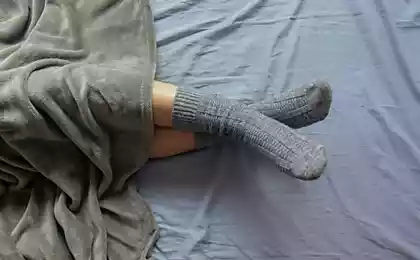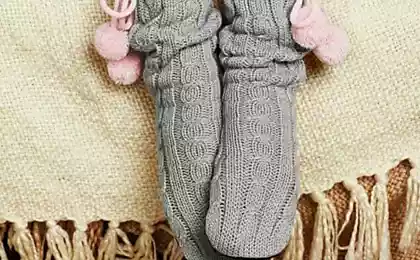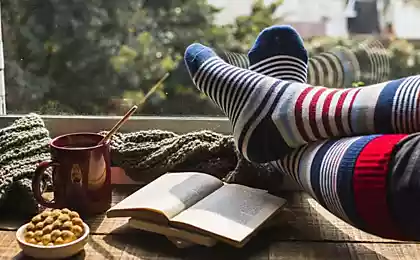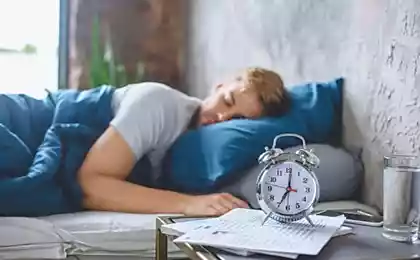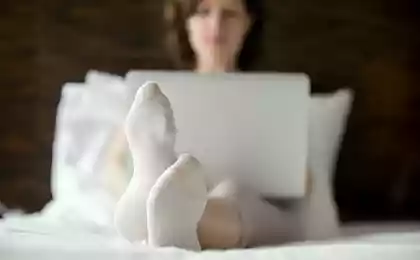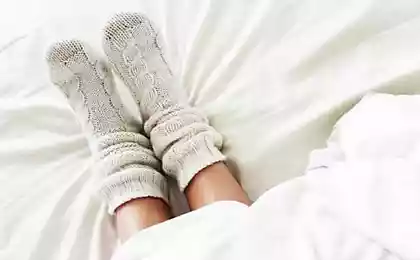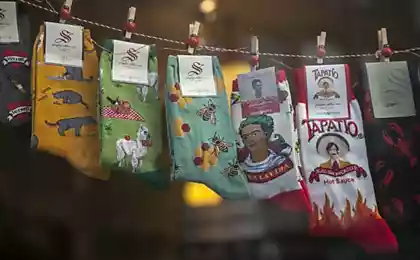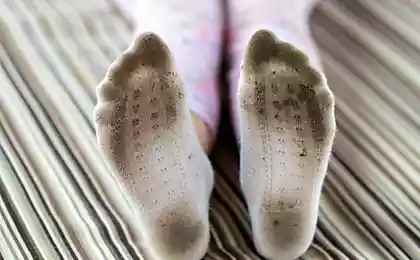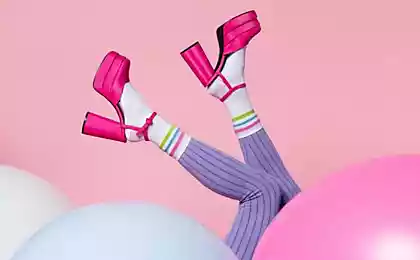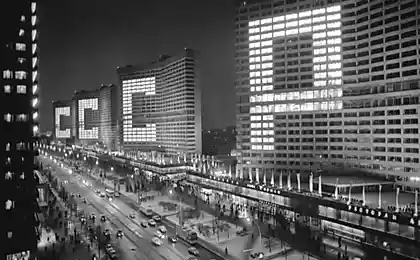1018
Footcloths vs socks
4 pictures
The question of the transition from footcloths on socks in the army of the Russian Federation discussed quite rapidly. This is due to the fact that the foot-cloth - of the uniforms of Russian soldiers, which has been used for hundreds of years. In addition, footcloths become an obligatory element of the soldier's folklore and humor. For many, the transition from footcloths on your toes - it is a progressive step, but people who are not the first year serving in the army, tend to believe differently. And they nostalgically recall Footcloths that perfectly protect your feet from corns and cold.
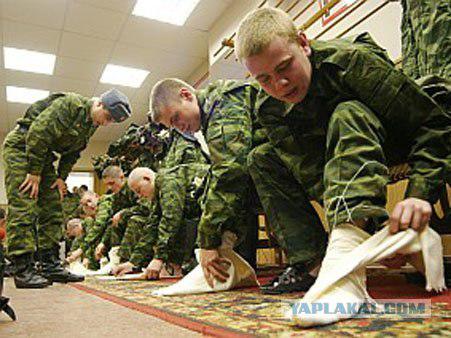
How did footcloths
In order to start talking about what is better and more convenient foot wraps or socks should refer to history. Many people believe that the invention footcloths - it is a merit armies Slavic countries, that is not so. The first leg wrappings were used more than 30 thousand years ago in the western part of Eurasia. This fact could prove American historian Eric Trinokaus. Around this time, people began to make shoes from the skins of animals, wrapping them around his feet like modern footcloths. Moreover, such a shoe insole first applied and made of grass. Also, primitive foot wraps were discovered by archaeologists during excavations on the territory of the Roman Empire. Scientists have dated the find 79 BC Roman foot bindings were made of fabric and how Russian soldiers, legionaries also wrapped their feet. In addition, it is known that in Russia footcloths brought Peter I, who borrowed it from the Dutch. Since then, the Russian army loved them so that even attempts to replace them with stockings in the 18th century have totally failed, despite the European fashion.
Global transition to footcloths on socks began in the mid-20th century, with Europe rather quickly able to move their army units to wear, but during World War II most of the soldiers of the Wehrmacht continued to use foot bindings instead of "new" socks. The fact that the socks, especially in the eastern part of Germany, soldiers often used as gloves, since they are very lacking in the army, and in a cold without them had a pretty tight. Slavic countries are not in a hurry to move on with footcloths socks, for example, Ukraine refused to footcloths just four years ago, with the military high command even offer design of the monument foot bindings. In Belarus, the transition ended only a year ago, while in Russia the process continues to this day, and on average calculations, will continue for another couple of years.
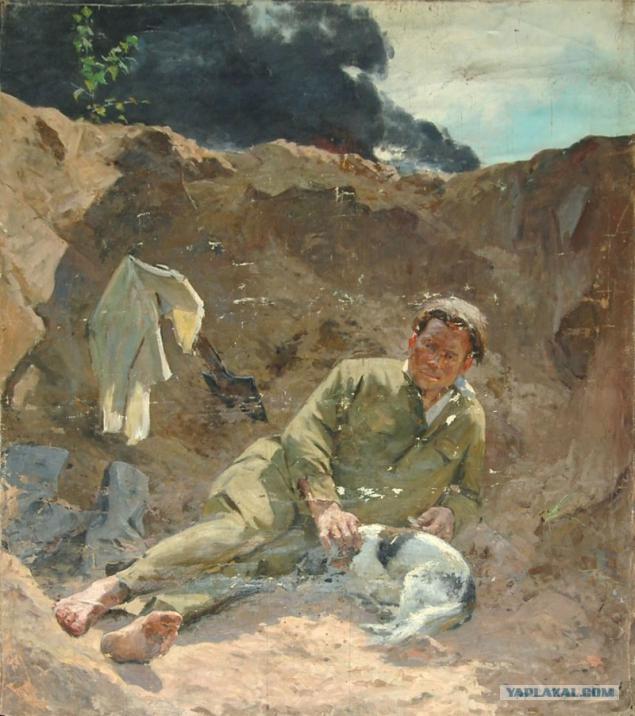
What do footcloths
For footcloths commonly used cotton cloth summer and cloth or flannelette fabric winter. The size of one leg wrappings about 40 to 90 cm. The cloth should only be one-piece, no seams and stitching footcloths of the pieces is not allowed, otherwise the seams will chafe, causing blisters. In addition, the cloth footcloths must necessarily be new, if they are made of old, dilapidated fabric that will last long.
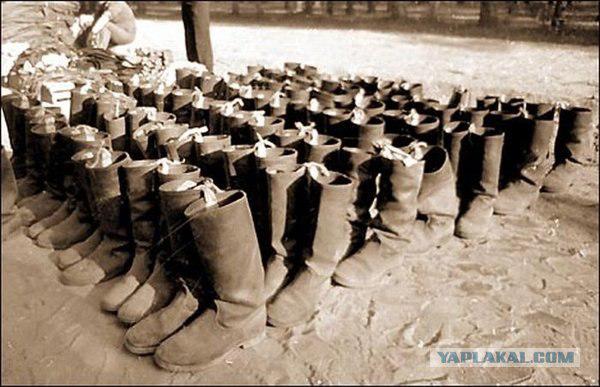
The pros and cons
Despite the fact that the socks officially transferred the whole army of Russia, at the footcloths is quite a lot of fans who bring strong arguments in their favor. Firstly, in the field puttee can be made from any piece of matter, and if it is correct to tie, then the leg is warm and corn in any shoe you will not natret. The second argument in favor hygiene feet, in the case of lengthy fights when washing clothes there is no time, puttee can rewind from the dirty side to the clean and continue to use it for some time, but a dirty sock, no matter how gut-wrenching inside out, will remain messy . The downside of using footcloths can be called only fact - it is a necessary skill winding leg wrappings, the first time one rarely gets the correct wind leg.
The problem of transition occurs in the fact that while the state is not ready to give a sufficient number of pairs of socks for soldiers, and if they change once a week, in conditions of intense training, and forced marches in military ankle boots, they just do not stand up. For tarpaulin boots socks and hardly suitable as corn in their operation, especially at first, provision.
In addition to army units, puttee loved and experienced tourists, as the campaign has to think more about the quality and comfort of walking, rather than on appearance. Keep in mind that by using footcloths leg is wrapped in two layers of fabric, and thus in the case of short-term contact with water soaks through only the top layer of fabric. In this case it is sufficient to rewind puttee the other end to stop again was dry and warm. Wet part footcloths would wound in the leg, which is not too affected by it. In addition, wet footcloth faster dried over a fire or just the sun, rather than the toe. If you dressed in the shoes would stretch a little too big, and then only by foot bindings can be firmly put his foot in the free shoes.
Footcloths or socks in the army
From a medical point of view footcloths to win socks, as especially in the first year of service soldiers often suffer from abscesses and other nasty infections that penetrate the skin due to scuffs and small scratches. Socks, even the strongest, still several times thinner than a normal foot bindings, and therefore the smaller leg injuries occur more frequently, they can serve the cause of diseases of the skin of feet. On the other hand, footcloths less erased, so the development of various fungal diseases in their use is much more common.
In conclusion, I must say that a full transition to the socks can be carried out only after changing his shoes in the army, replacing the tarpaulin boots on modern comfortable shoes or boots with laces. Moreover, shoes for men should be selected strictly on the size in order to avoid rubbing the shoes and the right size with the Russian army has always been the problem.
topwar.ru/13334-portyanki-ili-noski-v-armii.html

Source:
The question of the transition from footcloths on socks in the army of the Russian Federation discussed quite rapidly. This is due to the fact that the foot-cloth - of the uniforms of Russian soldiers, which has been used for hundreds of years. In addition, footcloths become an obligatory element of the soldier's folklore and humor. For many, the transition from footcloths on your toes - it is a progressive step, but people who are not the first year serving in the army, tend to believe differently. And they nostalgically recall Footcloths that perfectly protect your feet from corns and cold.

How did footcloths
In order to start talking about what is better and more convenient foot wraps or socks should refer to history. Many people believe that the invention footcloths - it is a merit armies Slavic countries, that is not so. The first leg wrappings were used more than 30 thousand years ago in the western part of Eurasia. This fact could prove American historian Eric Trinokaus. Around this time, people began to make shoes from the skins of animals, wrapping them around his feet like modern footcloths. Moreover, such a shoe insole first applied and made of grass. Also, primitive foot wraps were discovered by archaeologists during excavations on the territory of the Roman Empire. Scientists have dated the find 79 BC Roman foot bindings were made of fabric and how Russian soldiers, legionaries also wrapped their feet. In addition, it is known that in Russia footcloths brought Peter I, who borrowed it from the Dutch. Since then, the Russian army loved them so that even attempts to replace them with stockings in the 18th century have totally failed, despite the European fashion.
Global transition to footcloths on socks began in the mid-20th century, with Europe rather quickly able to move their army units to wear, but during World War II most of the soldiers of the Wehrmacht continued to use foot bindings instead of "new" socks. The fact that the socks, especially in the eastern part of Germany, soldiers often used as gloves, since they are very lacking in the army, and in a cold without them had a pretty tight. Slavic countries are not in a hurry to move on with footcloths socks, for example, Ukraine refused to footcloths just four years ago, with the military high command even offer design of the monument foot bindings. In Belarus, the transition ended only a year ago, while in Russia the process continues to this day, and on average calculations, will continue for another couple of years.

What do footcloths
For footcloths commonly used cotton cloth summer and cloth or flannelette fabric winter. The size of one leg wrappings about 40 to 90 cm. The cloth should only be one-piece, no seams and stitching footcloths of the pieces is not allowed, otherwise the seams will chafe, causing blisters. In addition, the cloth footcloths must necessarily be new, if they are made of old, dilapidated fabric that will last long.

The pros and cons
Despite the fact that the socks officially transferred the whole army of Russia, at the footcloths is quite a lot of fans who bring strong arguments in their favor. Firstly, in the field puttee can be made from any piece of matter, and if it is correct to tie, then the leg is warm and corn in any shoe you will not natret. The second argument in favor hygiene feet, in the case of lengthy fights when washing clothes there is no time, puttee can rewind from the dirty side to the clean and continue to use it for some time, but a dirty sock, no matter how gut-wrenching inside out, will remain messy . The downside of using footcloths can be called only fact - it is a necessary skill winding leg wrappings, the first time one rarely gets the correct wind leg.
The problem of transition occurs in the fact that while the state is not ready to give a sufficient number of pairs of socks for soldiers, and if they change once a week, in conditions of intense training, and forced marches in military ankle boots, they just do not stand up. For tarpaulin boots socks and hardly suitable as corn in their operation, especially at first, provision.
In addition to army units, puttee loved and experienced tourists, as the campaign has to think more about the quality and comfort of walking, rather than on appearance. Keep in mind that by using footcloths leg is wrapped in two layers of fabric, and thus in the case of short-term contact with water soaks through only the top layer of fabric. In this case it is sufficient to rewind puttee the other end to stop again was dry and warm. Wet part footcloths would wound in the leg, which is not too affected by it. In addition, wet footcloth faster dried over a fire or just the sun, rather than the toe. If you dressed in the shoes would stretch a little too big, and then only by foot bindings can be firmly put his foot in the free shoes.
Footcloths or socks in the army
From a medical point of view footcloths to win socks, as especially in the first year of service soldiers often suffer from abscesses and other nasty infections that penetrate the skin due to scuffs and small scratches. Socks, even the strongest, still several times thinner than a normal foot bindings, and therefore the smaller leg injuries occur more frequently, they can serve the cause of diseases of the skin of feet. On the other hand, footcloths less erased, so the development of various fungal diseases in their use is much more common.
In conclusion, I must say that a full transition to the socks can be carried out only after changing his shoes in the army, replacing the tarpaulin boots on modern comfortable shoes or boots with laces. Moreover, shoes for men should be selected strictly on the size in order to avoid rubbing the shoes and the right size with the Russian army has always been the problem.
topwar.ru/13334-portyanki-ili-noski-v-armii.html

Source:

